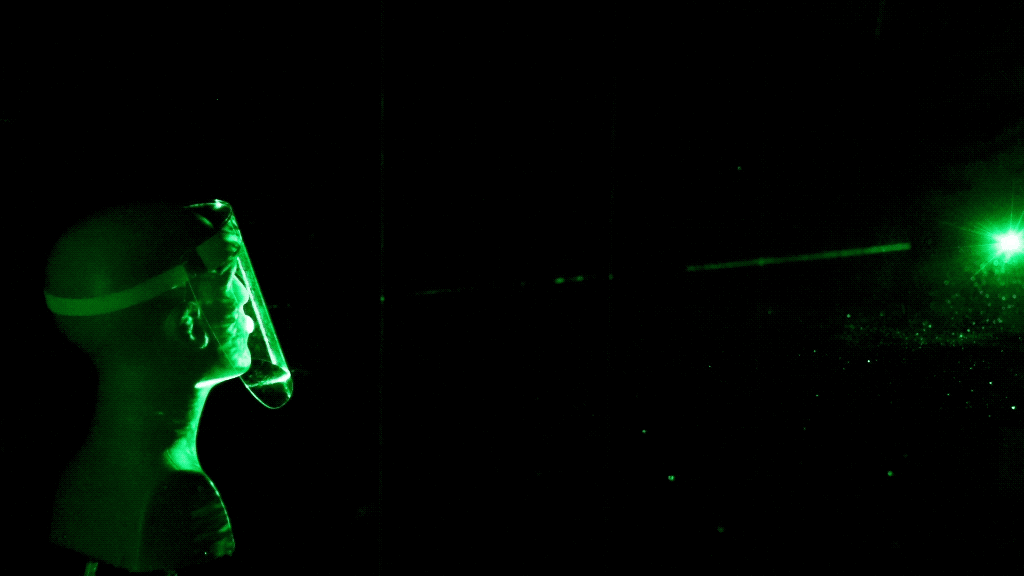
Malacañang and the Inter-Agency Task Force for the Management of Emerging Infectious Diseases required Filipinos to wear face shields over their face masks outside their homes and violators will be asked to pay a fine or endure time in prison.
Wearing the plastic shields were previously only required inside commercial establishments such as malls and in public transport.
“People going out of their homes are mandated to wear full face shields together with masks, whether reusable or do-it yourself masks and other protective gear,” the IATF resolution read.
Presidential spokesperson Harry Roque specified that the protective gear should fully cover the face from the forehead to the chin.
“Ngayon po kasi, kinakailangan palaging naka-facemasks pero ang face shields ay required lamang para sa mga malls at enclosed na mga lugar. Pero ngayon po, kinakailangang isuot na kapareho ang face shield at ang facemasks. At kinakailangan po full ang face shield, kasama iyong facemasks, ear loop masks, indigenous reusable or do-it-yourself masks or other protective equipment,” he said.
Roque stressed that this “additional protection” will help prevent the surge of Filipinos getting infected with the deadly virus.
“It’s really because of the possibility na tayo ay magkakaroon ng surge itong panahon ng Kapaskuhan, so it’s an additional protection para maiwasan po ang surge. Lahat naman po ito, hindi ito iri-require kung hindi po makakabuti sa ating kalusugan,” Roque said.
There is no assurance if this policy will be lifted, Roque said. Penalties of violators will also depend on local government units.
While most Filipinos have no problem wearing face masks, the stricter face shield policy drew the ire of motorists and commuters who expressed their grievances on social media.
Some users complained that the face shield adds humidity that makes it more difficult breathe.

Others aired that most types of face shields in the market easily fog up for eyeglass wearers. They also tend to cause dizziness among the elderly who need to go outside.

Poll commissioner Gregorio Larrazabal, meanwhile, said it is dangerous for cyclists and motorcycle riders to wear face shields.
“Wearing a face shield while riding a bicycle is dangerous. I don’t wear one. But keep one in the bag and use it when I enter business establishments. I do wear a helmet and face mask when riding a bicycle,” he said.
Some users, meanwhile, raised suspicion that some IATF members or government officials are exploiting the public with the new protocol.


Others also argued there’s no scientific proof yet showing the effectiveness of face shields against getting infected with the virus that causes COVID-19.
“Which other country makes use of face shield mandatory? What study/science is it based on? Did WHO, CDC come out with a statement?” one user wrote.
“The same IATF that permits dine-ins in enclosed spaces. Illogical, profit-driven, and irresponsible,” another wrote.
Gideon Lasco, a physician and a columnist, perceived this to be a “misguided” response to the pandemic.
“Face shield is required everywhere” is yet another example of a “one size fits all” approach that has characterized the government's failed and misguided response to the pandemic.
— Gideon Lasco (@gideonlasco) December 15, 2020
What science says
A study published in the journal Physics of Fluids does not find face shields helpful in blocking droplets. Visualization shows that the visor blocks the initial forward motion of a cough or sneeze but still spreading out the sides.
The simulation the researchers performed showed droplets remained suspended at the bottom of the shield and spread to the front and sides of the mannequin used.

“For the face shield simulation, the shield initially deflected droplets toward the ground after a cough. But small droplets remained suspended at the bottom of the shield and then floated around the sides, eventually spreading about 3 feet (0.9 meters) to the front and sides of the mannequin. In some cases, the droplets spread backward, behind the mannequin, instead of forward,” the authors were quoted as saying.
At least two other studies on JAMA and NEJM recommend health workers’ use of face shields together with medical-grade masks to reduce the exposure of the eyes from aerosols containing the coronavirus.
Studies on public use of face shields outside medical settings are scarce. — Catalina Ricci Madarang









